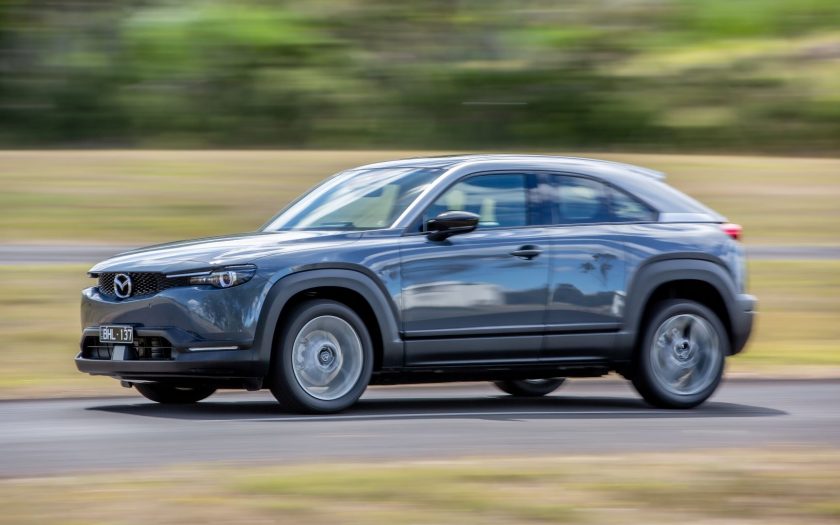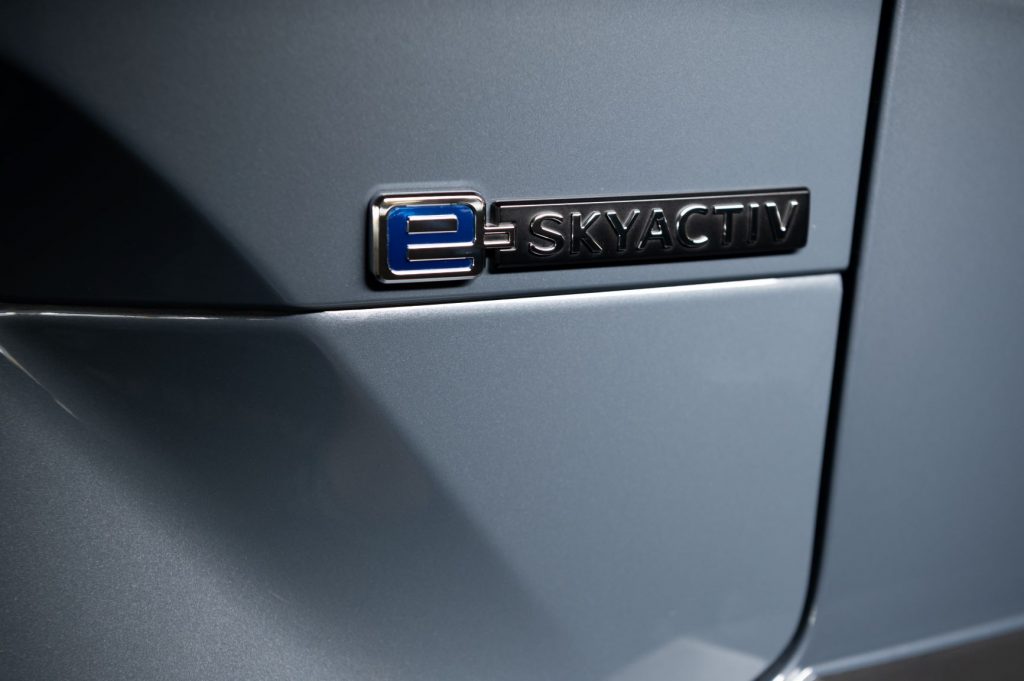Chris Riley tests the 2022 Mazda MX-30 Astina Electric with pricing, specs, ride and handling, safety, verdict and everything the over-50 driver needs to know.
Summary: Too much money, too little range.
2022 Mazda MX-30 Astina Electric
Pricing: $65,490 (plus on road costs). Premium paint $495. Tri-colour paint $995. Specialty paint (Polymetal Grey, Soul Red Metallic) $1490.
Warranty: Five-years, unlimited km
Safety: 5-star ANCAP
Engine: battery electric motor
Power: 107kW at 4000rpm
Torque: 271Nm
Transmission: single-speed automatic, front wheel drive
Body: 4395mm (long); 1848mm (wide); 1555mm (high)
Weight: 1654kg
Battery capacity: 35.5kWh
Official consumption: 18.5kWh/100km
Towing capacity: 1200kg
Wheels: 18-inch alloy
Tyres: 215/55R18
Ground clearance: 130mm
Turning circle: 11.4m
seniordriver consumption on test: 17.2kWh/100km
[review]
We were supposed to get the Mazda MX-30 Electric a few weeks ago, but someone forgot to charge it.
The plan was to drive from Sydney’s Alexandria to Cameron Park near Newcastle, a distance of about 160km.
MX-30 has a claimed, fully-charged range of 224km, so it was eminently doable – or so we thought.
Just in case, we had identified the location of some fast, commercial DC chargers along the route.
It would have been nice if the satnav directed us to the nearest charger that will do the job.
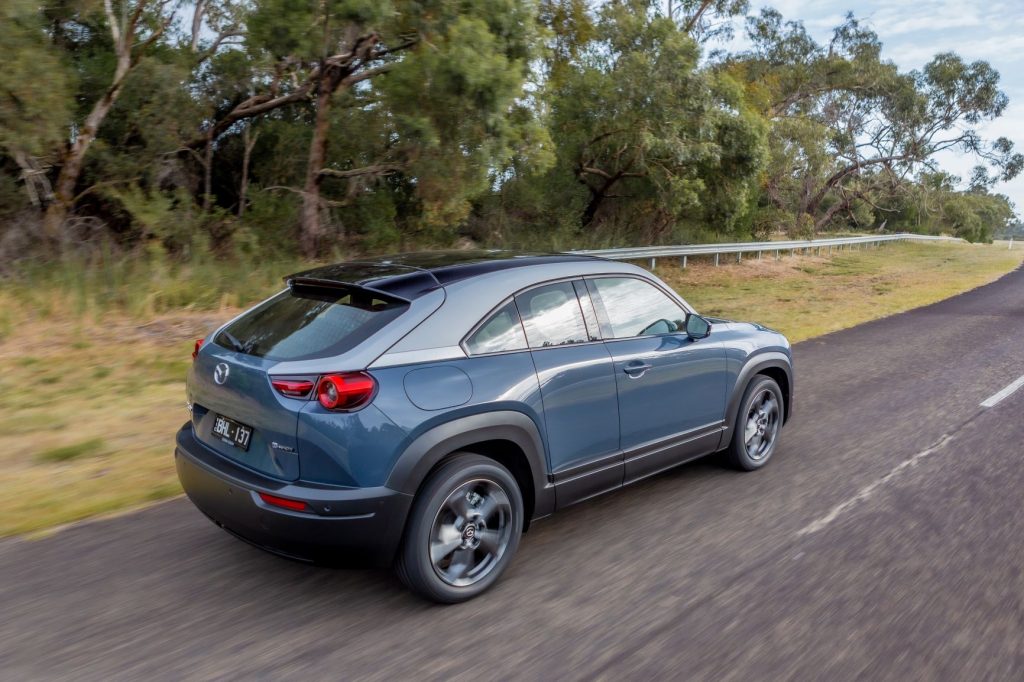
What you get for your dollar
Priced from $65,490, Mazda MX-30 Electric is the latest in a growing selection of electric vehicles (EVs) now available in Australia – and Mazda’s first fully-fledged electric offering.
It also offers a hybrid, petrol-electric version of the car and apart from a small badge, they could be twins.
Priced from $33,990, the Mazda MX-30 M Hybrid is powered by a 2.0-litre petrol engine, together with a 24-volt battery with integrated starter generator.
It’s good for 6.4L/100km and a theoretical range of 797km.
Both versions feature an almost identical list of inclusions, with single-zone climate air, combo cloth and artificial leather upholstery, 10-way power adjust driver’s seat with memory, heated front seats and a heated steering wheel.
The list also includes 18-inch alloys, head-up window display, adaptive cruise control, auto high beam, 360-degree monitor, front and rear parking sensors, powered glass sunroof, plus 12-speaker Bose audio with satellite navigation, DAB+ digital radio, plus Apple CarPlay and Android Auto connectivity.
Key safety features include 10 airbags, Autonomous Emergency Braking (AEB) with pedestrian and cyclist detection, Smart Brake Support including Turn Across Traffic function and Mazda Radar Cruise Control with Stop & Go function.
What you don’t get is a power tailgate or wireless phone charging, nor is there a spare tyre – just a puncture kit.
Premium paint adds $495, three-tone paint $995, while Polymetal Grey or Soul Red Metallic run to $1490.
Service intervals are 12 months or 15,000km and it comes with a 5-year unlimited kilometre warranty along with 5-year roadside assistance.
The battery is covered by a separate 8-year/160,000km warranty.
Finance with guaranteed buyback is offered and you can pay for servicing in advance which is $1273 for five years.
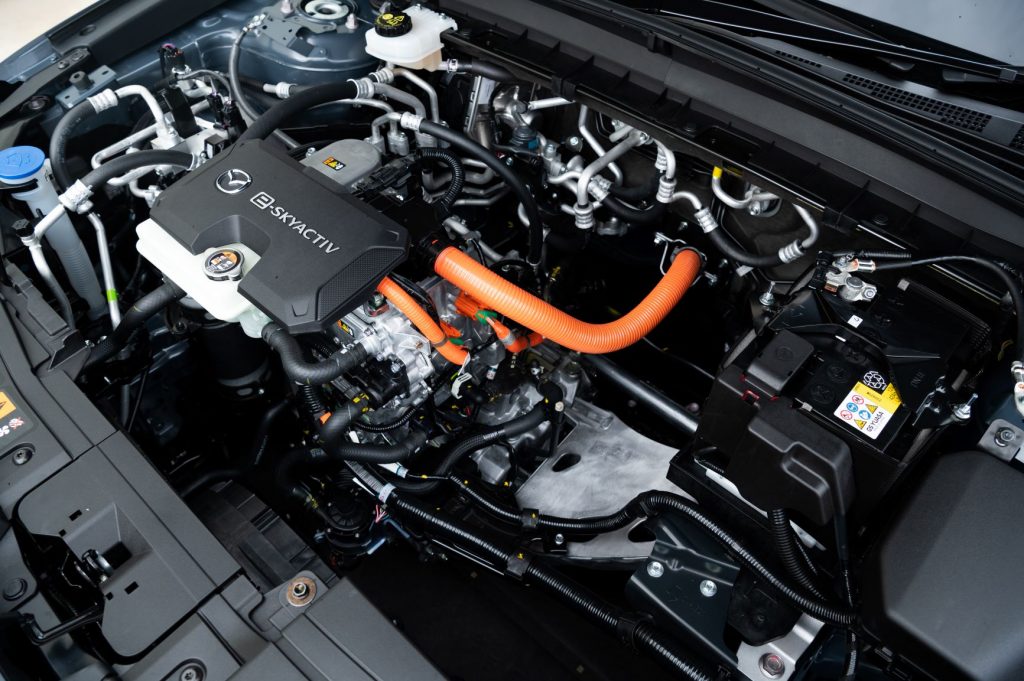
The technical stuff
The drivetrain generates 107kW of power and 271Nm of torque, with drive to the front wheels via a single-speed reduction gear style transmission.
It has a smallish 35.5kWh battery and consumes 18.5kWh/100km which in part explains the car’s meagre range, although Mazda describes 224km as the “perfect” figure for urban commutes over the course of a typical week.
It is however quick to point out that range figures are for comparison purposes and may not always reflect real life driving results.
Factors include the starting charge of the battery, accessories fitted (post registration), variations in weather, driving styles, vehicle load and use of features such as air conditioning or heated seats.
Because the electric motor makes little or no noise, the audio system generates a comforting, turbine-like sound that rises and falls with the accelerator.
Unlike earlier EVs, the charge port is located at the rear like petrol models and supports both Type 2 AC and Combo 2 DC charging connections.
It’s supplied with a portable charger that can be plugged into a standard 240V, 10A household outlet and takes about 9 hours to deliver 20-80 percent charge (as in not fully charged).
Stepping up to a 6.6kWh AC wallbox or public charger, the same 20-80 percent takes about three hours.
With a commercial 50kWh DC charger, the time reduces to as little as 36 minutes.
The thing is that continual use of fast chargers is likely to reduce the operational life of the batteries.
Catch-22.
Day 1:
At pick up the car showed 98 percent charge and a maximum range of 183km, nowhere near the promised 224km – and perilously close to the 160km planned.
I might add, the trip back from Cameron Park to the Blue Mountains is 190km and could have been a major drama.
In hindsight, we were lucky the booking fell through.
By the time we got our electric wunderkind home, we had travelled 85.5km. The battery had 52 percent remaining and a range of 96km.
It had been a long day so we decided to put off charging until the following evening.
The small boot by the way accommodates a large suitcase, but little else. We were forced to put the rest of our luggage in the back.
That’s when we discovered the Freestyle or “suicide” doors, resurrected from the RX-8 sports car.
FYI. Guys, they didn’t work then – and, guess what? – they still don’t.
Rear legroom is extremely limited and once you’re in the closeted back, the doors cannot be opened until the front doors have first been opened.
In other words, you’re stuck. So don’t expect your next Uber to turn up in an MX-30 – hybrid or electric.
Day 2:
By the end of the second day the MX-30 had travelled a total of 115km. The battery was sitting on 32 percent and range showed just 57km.
My wife who had been driving the car reported trouble starting, not once – but about one in every three starts.
She also had trouble getting it into reverse at one point.
Also of note: We have a reasonably steep driveway and discovered the front doors will not stay open on the incline, making getting in and out risky.
Connected the car to the charger in the evening in readiness for the next three days of travel to and from work.
It’s a round trip of about 40-45km – exactly what the MX-30 is designed to do, we’re told.
Day 3:
All charged up and nowhere to go.
Alas, my wife called in sick and the MX-30 spent the day sitting there.
If we had to go out, we took our own car because the Mazda was parked in.
To explain, charging an electric car, at our place at least, involves moving cars around, so the EV has access to the garage and a power point.
An extension lead will not work – believe me, I’ve tried.
Because charge cables are only three or four metres long, you often need to reverse in too.
It’s ironic because EVs are touted as the perfect choice for city dwellers, most of whom don’t have access to off-street parking.
The whole charging scenario turns the purchase of an EV into something of a lifestyle choice.
You spend your time worrying about how much charge the car has left and when and where you’ll have the opportunity to charge it again.
Day 4:
Back to work.
The MX clocked up another 41km, bringing the accumulated distance travelled to 156km.
After a couple of days charging, it started the day with a full charge and a range of 181km (still no sign of the promised 224km).
By the end of the day, we had 150km and 80 percent left.
My wife likes the fact the Head-Up window display shows school zones as well as the speed limit.
I’d like it too, if it was visible to my polarised sunglasses.
In our area, we have seen a proliferation of mobile speed cameras in recent times and the display is a constant reminder of how fast we are going (and how fast we should be going).
Day 5:
Work again.
Travelled 41km. The car showed 106km to go with the battery at 56 percent, and an accumulated distance of 197km.
I’d be remiss if I didn’t mention the funky cork finish of the centre console.
While it might be eco-friendly, in an Ikea sort of way, I have some concerns about how well it will wear over time.
I can imagine kids and/or pets picking at it which would be the beginning of the end once its integrity is compromised.
Day 6:
Just 12km to the shops and back. A range of 94km left and 51 percent battery remaining. Accumulated distance 209km.
Day 7:
Busy day.
A total of 82km travelled and it was touch and go in the end.
In the evening, we had a family dinner planned and in hindsight the car really should have been charged, but sometimes one needs to push the envelope.
Travelling there was no problem. In fact, we actually picked up a couple of kilometres on the downhill run thanks to regenerative braking. But by the time we got home, it had just 12km and 8 percent charge left.
Did I mention that I forgot to take the charge cable with us?
Talk about range anxiety.
Day 8:
Fully charged, the MX-30 is ready to go back.
Still in two minds about the car, I invited a mate to come for the drive. He’s a car guy and I wanted to get his thoughts, so I handed over the keys.
Bob (let’s call him Bob), had never driven an electric car and was rapt.
He and his wife own two cars, one a Mazda3 hatch. They’re looking to update and have their sights set on a CX-5 SUV.
Bob was surprised by how quickly the MX-30 responds to the accelerator.
I explained this is because maximum torque from the electric motor is available almost instantaneously. It’s a two-edged sword, however, because the more you plant it, the sooner the car is likely to run out of charge.
Batteries add a substantial amount of weight to the car. But they are mounted low in the chassis which means a low centre of gravity and improved handling.
The Hybrid G20e Evolve that we drove beforehand weighs 1481kg.
In comparison, MX-30 Electric tips the scales at 1654kg – a whopping 173kg more.
Like most Mazdas, the ride is firm but generally comfortable, although it tends to crash over speed humps unless you’re careful.
Steering is light and responsive, with wheel mounted paddles provided to modulate the amount of regenerative braking in five steps.
Handing back the keys, we had travelled 398.6km and had been forced to charge the car twice over the week.
In comparison, the hybrid was getting 7.2L/100km after a little over 400km – and we didn’t have to fill it once.
Good points
- Hip
- Green (or is it blue?)
- Responsive performance
- Fun to drive
- Choice of hybrid or electric
- Hybrid significantly cheaper
Bad points
- Too expensive
- Limited range
- No leather
- Single zone climate (no rear air vents)
- Freestyle doors
- Tight rear legroom
- Poor rear and side vision
- Fiddly gear selection
- Range anxiety
- Whole charging scenario
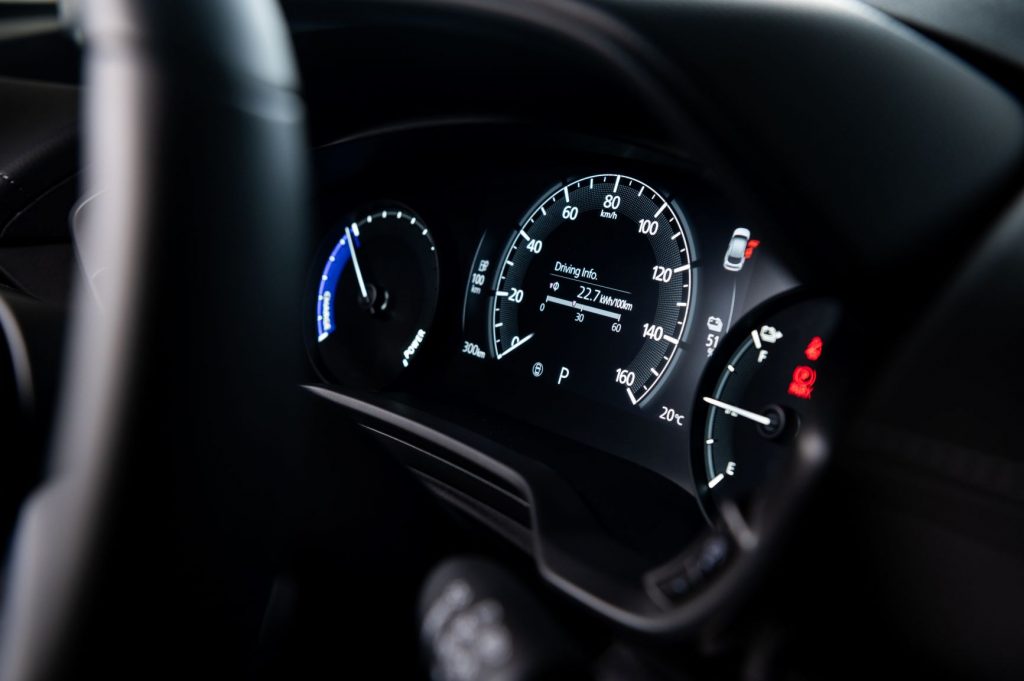
Summary
In the year just gone, it seemed like everyone wanted to know if the time was right to buy an electric car.
The interest is there, but the confidence is not – at least not yet.
There are two major factors to consider when buying an EV: price and range.
Range first and foremost, because that’s the thing people worry about most.
But price too, because the more you’re prepared to pay, the further an EV will go – Tesla is a good example.
The MX-30 E35 Astina is close to $70k by the time you put it on the road.
That’s a lot of folding money for a car that can’t get from Sydney to Newcastle on a single charge, don’t you think?
The Hybrid makes better sense at $33,990, or even $40,990 for the top of the whiz – with a range of close to 800km.
But the hybrid is a mild one and doesn’t appear to offer any major savings in the way of fuel consumption. Corolla, or even Camry Hybrid, would wipe the floor with it in comparison.
There are other electric options too, such as Hyundai’s Kona Electric which costs a bit less and has a range of 484km – more than twice that of the Mazda.
In terms of older drivers, a range of 224km or 181km or whatever it is might not be an issue, because they tend not to clock up as many kilometres (and could have the time to deal with the constant demands of charging).
Then there’s the sill doors and lack of room in the back, including a small boot.
Heck, who needs it?
RATINGS
Looks: 7.5/10
Performance: 7.5/10
Safety: 8/10
Range: 5/10
Practicality: 5/10
Comfort: 7/10
Tech: 7.5/10
Value: 6/10
Overall: 6.7/10
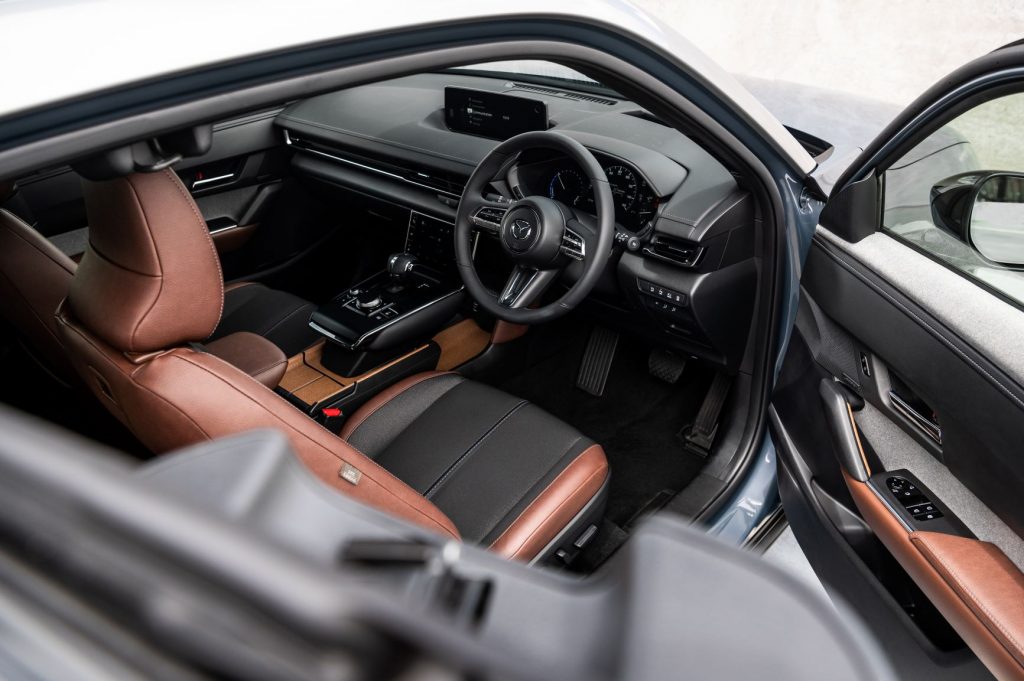
Things over-50s need to know
A mate of mine owns a CX-5. Like me, he’s now over 60 and has just retired. His previous car was a Mazda6 which he had for many years before passing it on to one of his kids.
His CX-5 now has 60K on the clock. He says it’s comfortable to drive and he likes it very much.
It’s got reasonable legroom in the back while the boot is flexible and a good size.
He likes the head-up display, which shows his speed in the windscreen – although it hasn’t stopped from being booked a couple of times.
He isn’t however a fan of the factory fitted towbar which is fiddly to use.
I can remember trying to talk him into getting the diesel because he does quite a bit of long-distance country driving.
But of course, he opted for the 2.5-litre petrol model and not surprisingly he describes the fuel consumption as ordinary.
With diesel set to disappear in the near future, this is a car crying out for a hybrid powertrain — if not a fully electric option.
Maybe then CX-5 can take back its crown from the very good and let me say very practical Toyota RAV4 Hybrid which is now the number one selling car in this segment.
Duh . . .
seniordriver comments
As usual, Chris nails the issues facing buyers of the Mazda MX-30.
Like him, we only ever saw a range figure on the dash readout of 182km or 185km before needing to recharge, despite the official figure being 224km. In fact, when we collected the car from Mazda, we were forewarned that others had managed between 150km and 200km, “depending on their driving style”.
If you’re a regular reader of seniordriver you’ll know that we are notably light on the throttle and usually manage to get closer to the official figures than most, but not with the Mazda MX-30.
Our first trip reduced the predicted range from 182km to 174km, despite us travelling 120km in city and suburban traffic. That was a promising start, but then we suffered a real case of range anxiety because we knew our journey home was 100km or so, and we suspected high speed country driving might consume battery capacity faster than usual. We were so concerned, we left the car parked and used an alternate car to get us to lunch and back. As it happened, we made it home, a distance of 96km, our range reduced to just 67km, with 37 percent batter capacity remaining. I strongly suspect that we wouldn’t have made it home had we used the car to take us the 30-odd kilometres to and from lunch. In any case, I wasn’t willing to take the chance.
Unlike Chris, we had no trouble recharging the MX-30 using a heavy-duty extension cord and after leaving it on the charger overnight (using a standard wall socket), we once again had full charge and a predicted range of 185km.
It’s worth commenting here that we at seniordriver have made a number of approaches to the various charging companies including Chargefox and never received a call back or response to questions asked on behalf of our readers. Attempts to create an account with Chargefox have never been successful, so we have no option but to charge any EVs we are supplied using a standard home power point. When we downloaded the Chargefox app to our phone, it utterly failed to show us where the nearest charge point was located (which would have been useless anyway, since we have been unable to establish an account). We are currently trying, yet again, to set up an account with Chargefox.
Our next journey in the MX-30 as a distance of 83km and reduced our range from 185km to just 92km, using 17.0kWh/100km and deleting the battery to 51 percent capacity.
Another overnight recharge (the readout predicted a recharge time of 12 hours before re-setting to suggest 8 hours and 40 minutes). Once again, when fully charged to 100 percent, our predicted range was 182km. We travelled 91km to return the car (with a great deal of relief, we might add!) and used 51 percent of battery capacity.
As you can see, predicting just how far you can travel in the MX-30 is a bit hit and miss and appears remarkably variable. We wouldn’t feel comfortable travelling much more than 140km, especially with no access to public chargers.
Chris also comments on the strange cork material used on the console, to which we’d add the equally strange fabric used on door trims and elsewhere … looks like underfelt you’d expect to find when you pull up your old home carpet. And like him, we question the practicality and even safety of the rear-hinged rear doors that can only be opened when the front doors are open (another problem is the likelihood of damage should anyone attempt to close the rear door while the front door is in the closed position).
All in all, like Chris, we’re not yet completely sold on EVs, and particularly dubious about the Mazda MX-30 Astina.
